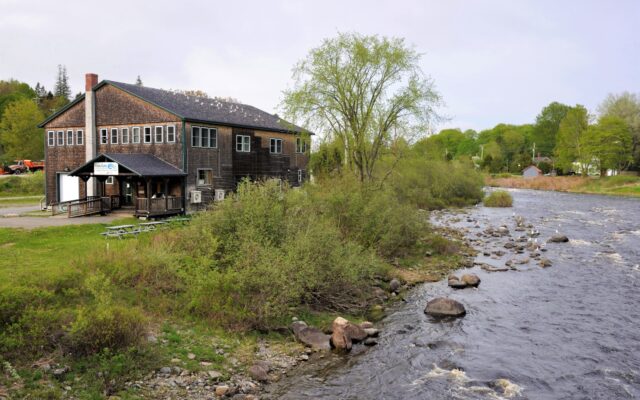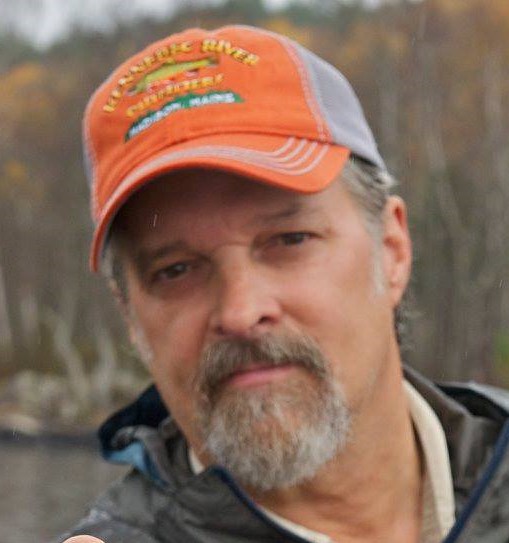
It’s time for a different approach to Atlantic salmon restoration
By Bob Mallard
You can’t put a monetary value on a species, or a price tag or timetable on efforts to prevent one from going extinct. Extinction is about much more than money, and its impacts are not fully understood until years after it occurs. Our environment is a complex series of natural interactions that work together to make our world what it is. For every action there is a reaction, and there is no way to fully understand what that will be until you lose a piece.
The nation’s Atlantic salmon are hanging by a thread. Atlantic salmon are not just another fish, they are the King of Fish, the Presidential Fish. They are an important part of Maine’s history, lore and outdoor heritage, and one of the things that makes Maine unique. And when it comes to Atlantic salmon, Maine is the last battleground in the United States. As goes Maine, so goes the Atlantic salmon. And as goes the Atlantic salmon, so goes Maine…

Hatcheries
I am no fan of fish hatcheries. They have become an albatross for state and federal fish and game agencies across the country. Hatcheries divert funds from land acquisition, habitat work, reclamation, law enforcement, information and education, and infrastructure, and at a time when costs are up and revenue is down. They account for a huge portion of many fish and game agency budgets, and are an economic black hole.
Conservation hatcheries
Not all hatcheries support recreational angling. Some are used to help restore native fish populations. These hatcheries work best when they are used to temporarily house fish during reclamation efforts, or breed fish from wild stock to restore lost populations. But just as ongoing stocking for recreation has failed to fix our fishing, ongoing stocking in support of restoration has failed to fix our fish.
Ongoing restoration stocking fails for the same reason most recreation stocking fails to create self-sustaining populations of fish — domestication. Fish raised in captivity lack the fitness and basic skills required to survive in the wild. Unnatural and regularly available food, along with cooled and treated water, stable water flows and protection from predators result in a fish that is more like a cow than a bison, or a farm duck than a wood duck.
Just as northwestern salmon and steelhead hatchery-centric restoration efforts have failed to deliver on their promises, ongoing stocking in the northeast in support of Atlantic salmon has not solved the problem either. But to be fair and clear, the situation out west is nowhere near as dire as that found in the east where Atlantic salmon are on the brink of extinction and propped up solely through stocking.
Sea-run Atlantic salmon in the United States are all but extirpated outside of Maine, with restoration efforts in Connecticut, Massachusetts, New Hampshire and Vermont suspended due to poor returns. While removing dams to allow Atlantic salmon access to historic spawning areas, and safe passage to the sea and back, is the only way we will recover these fish, until this happens, we need to find a way to keep some level of fish alive, and ideally in the wild. While most western salmon populations are a mixture of wild and stocked fish, Atlantic salmon are almost exclusively stocked. Even those born in the wild are likely to have at least one stocked parent, and it’s just as likely that both were stocked. By some estimates, fewer than 100 truly wild Atlantic salmon — those born in the wild from parents born in the wild — return to Maine rivers and streams in any given year.
A different approach
In an attempt to turn the tide, Downeast Salmon Federation opened two of their own hatcheries: The Peter Gray Hatchery on the East Machias River, and the Pleasant River Hatchery in Columbia Falls. Both hatcheries use river-specific strain eggs from the federal Craig Brook National Fish Hatchery in East Orland.
Historically, Atlantic salmon stocking has been unfed, or newborn, fry-centric. While 1-year-old smolts are seen as more likely to survive than fry, the cost, time, and space required to raise them is high, and the resources are not available. While cheap to raise, unfortunately, the problem with fry is that far too few make it back to the ocean to allow them to grow to spawning age.
What DSF has done is to split the difference and raise parr. To lessen domestication, rather than nurture the fish, DSF employs tough love. Raised in untreated river water, and forced to move from incubation boxes to rearing tanks on their own, DSF lets nature, not nurture, decide which fish live and which don’t. The result is what DSF refers to as “little athletes,” or stronger, healthier fish.
Not surprisingly, DSF fish are returning to the ocean as smolts at higher rates than fish raised in the federal hatchery. In fact, the reported return rate is up to 14 times higher than federally stocked fish. The results are so glaringly better, the feds are now recommending parr stocking in other waters. To help expedite the process, U.S. Fish & Wildlife Service has established a $770,000, 5-year, 1:1 matching grant fund.
To be clear, while temporary stocking has helped restore some fish populations, long-term stocking has failed to achieve its goals in almost all cases. The situation regarding the DSF hatcheries is no different: It should not, and cannot, go on forever. Shutting these hatcheries down is the goal of DSF, but not until the situation has stabilized and there is a safe level of wild Atlantic salmon brood in the rivers, streams, and ocean.
Meanwhile, we need to continue to address fish-passage as until Atlantic salmon can move unimpeded between historic spawning grounds and the ocean, no level or type of stocking will fix the problem. We also need to protect what salmon are in the rivers, streams, and lakes to the highest degree possible — something we are not doing today.
Only when DSF and the feds shut down their hatcheries will Atlantic salmon be truly restored. And the sooner this happens, the better, as even the best hatcheries come with a price, and that price is paid by wild native fish in competition for food and space, disease, predation, and genetic swamping. At best, conservation hatcheries buy you time to address the big picture. But they are not a long-term solution.